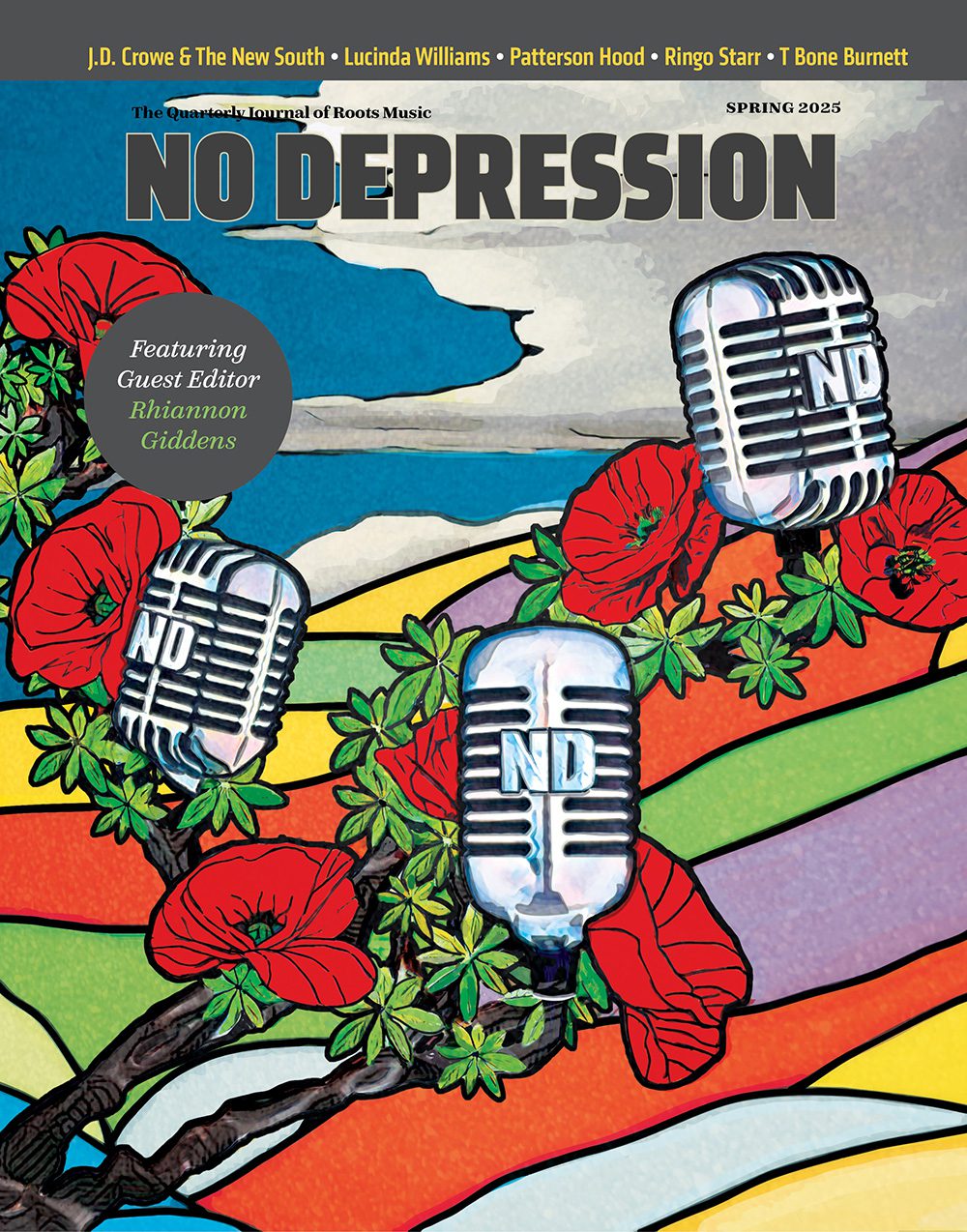Bonnie Guitar – Woman’s Work
Bonnie studied, performed and recorded on the local Morrison label with Tutmarc, 27 years her senior. The two married in 1944 and had a daughter, Paula, in 1950. Around 1955, a local hopeful, whose name she doesn’t remember, presented Bonnie with her future. “A songwriter came to me in Seattle and she wanted me to make some demos for her,” Bonnie says. “I’d recorded a couple of things and I sang with bands, so I had a local name, but very local, and in those days it really meant less than it means now.”
She made the demos, and the songwriter sent them to Robison. “I didn’t know Fabor Robison from anyone,” she recalls. “He contacted me and said, ‘I’d like you to come down and audition for me.’ He had a studio and a publishing company in the canyon, in Malibu, California. So I went down and he immediately asked me if I wanted to be a session player, which I did, and he said that he would record me, so he did.”
For the next few years, Bonnie lived with Robison and his wife in their Malibu home, playing sessions (most notably for Dorsey Burnett, Ned Miller and Tom Tall), getting to know a host of top-notch studio musicians (including the eminent guitarist Roy Lanham), and indulging a growing fascination with production values and technology.
“I worked in the mixing with the engineer,” she says, “but I worked as his assistant in there. I’d keep the records, do the cataloguing and things. So I learned to operate the equipment. He had a pretty decent studio, in fact a good one for being in a home — a nice control board, nice mixing board, and he got some pretty good sounds out of there.
“Fabor was very difficult to work with. But I didn’t care. My whole intent was to learn to produce and learn the studio. And regardless of how hard to work with he was, he had a lot of hits, so he did something right, you see? I learned everything from those years, so I don’t have any complaints.”
In 1956, having urged Bonnie to change her last name, Robison released two Bonnie Guitar 45s, the first featuring her originals, “If You See My Love Dancing” and “Hello, Hello Please Answer”. “We recorded my two songs with just one guitar,” she says, “didn’t use any band at all.” Robison sent the record to Cashbox and got a response along the lines of, “with the right material she could have hit records.” That assessment would be validated in a matter of months.
“I’d gone home to see my parents [she and Tutmarc had since divorced], and Fabor called me at home and said, ‘I have a song I want you to listen to. I’m recording it tonight. Come right back down.’ So I went back and he was recording ‘Dark Moon’ with Dorsey Burnett. He didn’t like Dorsey’s version of it.
“I told him I’d give up my royalties to be able to record that song. I knew in my mind, as little as I knew, that that was a hit song. I just knew it. So, we went right in the studio and started working on it, and I played the lead guitar and everything.” Ned Miller, the song’s composer and a fellow Fabor staff member, also contributed guitar; the only other instrument was a bass.
The simple production and extremely simple lyric to “Dark Moon” (it has but one verse) focused listeners on Guitar’s liquid butterscotch croon, and the understated but inescapable emotion of her delivery. Her tone was perfect, but beguilingly untrained; her sustains and slides were as masterful, within her range, as Patsy Cline’s.
Bill Gavin was smitten by that single (backed with her original “Big Mike”) and began championing it on his “Lucky Lager Dance Time”, a popular regional show often credited as the model for the later Top 40 format. A regional hit, “Dark Moon” was about to catapult Guitar onto the national stage.
Robison’s practice was to develop an artist and then sell their contract to a larger label. With Guitar, he scored a twofer. Randy Wood of Dot Records was interested in both Guitar and the song. He re-released “Dark Moon”, and it soared to #6 on the pop charts. It even hit #14 on the country charts, while Hawkshaw Hawkins’ nearly immediate cover languished unnoticed.
But another agenda was also in the works. “Randy Wood had Gale Storm at the time,” Guitar explains. “Gale Storm’s manager heard how my record was hitting, and he wanted her to record the song. So Dot covered it with her. There was a lot of controversy about that at the time — a label covering their own artist like that.”
Gale Storm had generated a string of hits for Dot, partly owing to her starring role in the TV series “My Little Margie”. “They tried to make it comfortable by taking me to her session while she was recording,” Guitar says, “and I could visit the ‘Little Margie’ set. But I think they just did what business does. Her manager was very forceful; she had a very high profile and I had no profile compared to hers, so why would they give attention to me? The funny thing, I didn’t think of [how] that would affect my sales. I didn’t think about sales. I was doing what I wanted to do. I was singing in the studio and playing in the sessions and producing. So I was happy.”
Guitar was even amused by the apparent confusion on jukeboxes. “We were working in the studio and after hours we’d go down to different places like the Copper Kettle, and ‘Dark Moon’ was down there with her name on my record. It would say ‘Dark Moon’ by Gale Storm, but it would be my voice, my record.”
Nearly five decades later, she is dumbstruck when asked whether the “error” might have been intentional, and perhaps more widespread than she imagined. This has never occurred to her.
“Dark Moon” was Gale Storm’s last hit record.




